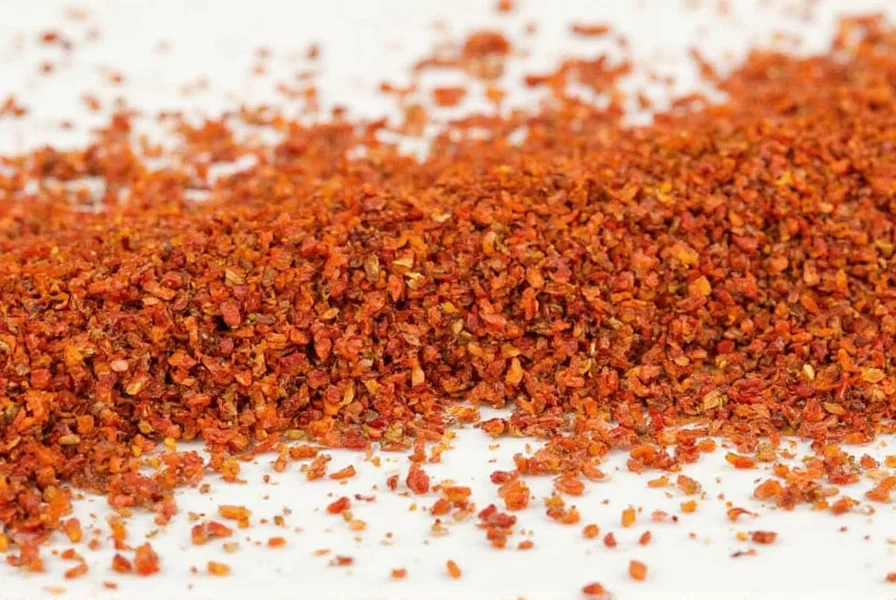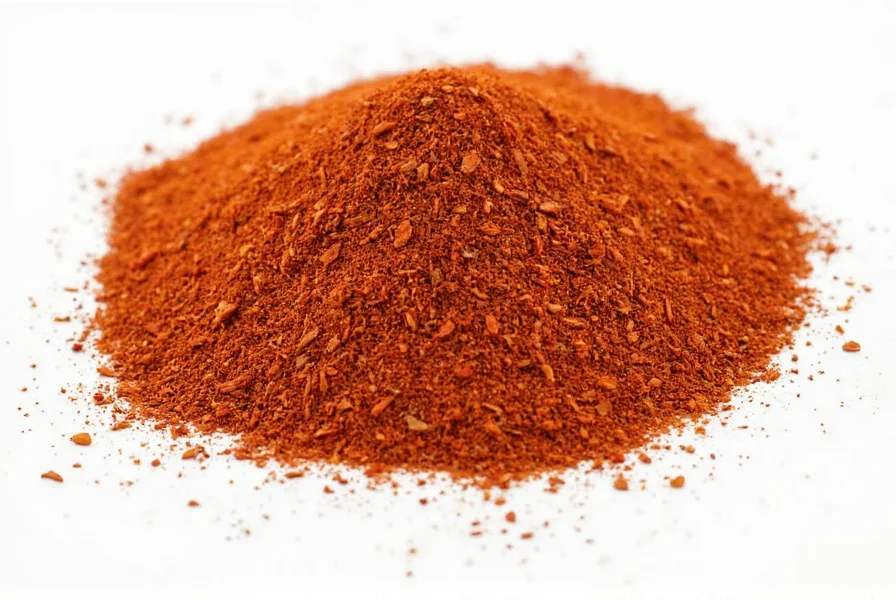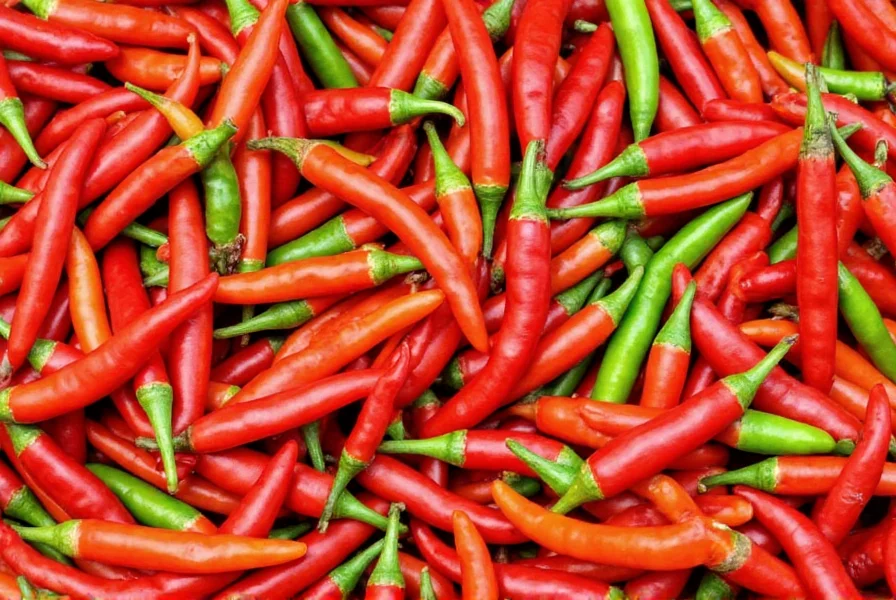Red pepper flakes are primarily made from cayenne peppers, though some brands may blend in other hot peppers like Thai chilies or bird's eye chilies for added complexity. In this guide, we'll explore everything you need to know about red pepper flakes, including their uses, storage tips, and how they compare to fresh chilies for authentic cooking.
Table of Contents
- What Exactly Are Red Pepper Flakes?
- Which Pepper Is Used in Red Pepper Flakes?
- Common Uses of Red Pepper Flakes in Cooking
- Red Pepper Flakes vs. Other Chilies: What's the Difference?
- Buying Guide: How to Choose the Best Red Pepper Flakes
- How to Store Red Pepper Flakes Like a Pro
- Frequently Asked Questions About Red Pepper Flakes
- Final Thoughts: Embrace the Heat
What Exactly Are Red Pepper Flakes?
At first glance, red pepper flakes look like just tiny bits of dried chili peppers. But there's more than meets the eye! These little crimson pieces pack a punch of heat and flavor, making them a go-to ingredient in many cuisines around the world — especially Italian, Mexican, and Asian dishes.
They're typically made by drying out hot peppers and then crushing or flaking them into small pieces. The result? A versatile spice that adds heat without overpowering other flavors. Whether you're cooking pasta, stir-frying veggies, or grilling meat, a pinch (or a generous sprinkle) of red pepper flakes can elevate your dish from bland to bold.
Which Pepper Is Used in Red Pepper Flakes?
While some brands may blend different types of chilies for complexity, most red pepper flakes are primarily made from cayenne peppers or similar hot peppers like Thai chilies or bird's eye chilies.
| Pepper Type | Heat Level (Scoville Units) | Taste Profile |
|---|---|---|
| Cayenne | 30,000–50,000 | Earthy, slightly smoky, with a lingering heat |
| Thai Chili | 50,000–100,000 | Sharp, bright, and intense heat with fruity notes |
| Bird's Eye Chili | 100,000–225,000 | Very hot, with a grassy, almost citrus-like flavor |
| Jalapeño (sometimes included) | 2,500–8,000 | Mildly spicy with vegetal undertones |
So when someone asks, "What pepper is red pepper flakes made from?", the short answer is usually **cayenne** — but don't be surprised if your favorite brand mixes in other peppers for added depth and kick!
Common Uses of Red Pepper Flakes in Cooking
One of the reasons red pepper flakes are so beloved is their versatility. They can be tossed into nearly any savory dish to add warmth and complexity. Here are some popular ways to use red pepper flakes:
- Pasta Sauces: Especially in arrabbiata sauce, red pepper flakes bring heat to the tangy tomato base.
- Pizza & Flatbreads: Sprinkle over your homemade pie before or after baking for a zesty finish.
- Stir-Fries: Toss in at the beginning or end of cooking depending on how much heat you want infused.
- Marinades & Rubs: Mix with olive oil, garlic, herbs, and salt for a fiery rub for meats or veggies.
- Dips & Dressings: Add a pinch to mayo, aioli, vinaigrettes, or hot sauces for extra kick.

Red Pepper Flakes vs. Other Chilies: What's the Difference?
You might wonder how red pepper flakes compare to fresh chilies, crushed red pepper, or even chili powder. Here's a breakdown to help you understand the differences:
| Type | Form | Heat Level | Flavor Notes | Best Use |
|---|---|---|---|---|
| Red Pepper Flakes | Dried, crushed | Moderate to high | Earthy, smoky, long-lasting burn | Sauces, oils, soups, marinades |
| Fresh Chilies (e.g., Jalapeño) | Fresh or pickled | Low to moderate | Vegetal, crisp, quick bite | Garnishes, salsas, tacos |
| Crushed Red Pepper | Dried, finer grind | High | Similar to flakes but more intense | Spicy dressings, dry rubs |
| Chili Powder | Ground mix of spices | Moderate | Smoky, earthy, with paprika and cumin notes | Tacos, chili con carne, Tex-Mex dishes |
The key takeaway? Red pepper flakes are great for infusing dishes with steady heat and texture, while fresh chilies give a sharper, briefer spice burst.
Buying Guide: How to Choose the Best Red Pepper Flakes
Not all red pepper flakes are created equal. Here's how to pick the right ones for your taste buds and cooking style:
Check the Label
- Ingredients: Ideally, the label should only list "crushed red pepper" or "red pepper flakes." Avoid blends with fillers or artificial additives unless desired.
- Country of Origin: Some top producers include the USA (especially California-grown), India, and Mexico.
- Whole Seeds vs. Seedless: Seeds carry more heat. If you prefer a milder flavor, opt for seedless varieties.
Brand Spotlight: Top Picks
Here are a few highly-rated brands and what makes them stand out:
| Brand | Features | Best For | Price Range |
|---|---|---|---|
| McIlhenny Company (Tabasco Brand) | Natural sun-drying process, no additives | Oil infusions, sauces | Mid-range |
| Mrs. Dash Spices | Mild blend with added herbs | Kids or spice-sensitive palates | Low-cost |
| Schneider's of Old Tyme | Consistent quality, pure cayenne | Everyday cooking, soups | Mid-range |
| Anthony's Goods Organic Red Pepper Flakes | Organic, non-GMO, fair trade certified | Health-focused cooks | Higher-end |
How to Store Red Pepper Flakes Like a Pro
Proper storage ensures your red pepper flakes keep their flavor and potency for months. Here's how to do it right:
- Airtight Container: Transfer flakes to a sealed glass jar or plastic container to prevent moisture absorption.
- Keep It Cool & Dark: Store in a cool pantry away from sunlight. Heat and light degrade the essential oils that give flavor and heat.
- Freeze for Longevity: For maximum shelf life (up to 2 years), store in a freezer-safe bag or container.

Frequently Asked Questions About Red Pepper Flakes
What pepper is red pepper flakes made from?
Most commercial red pepper flakes are primarily made from cayenne peppers, though many brands blend in other hot peppers like Thai chilies, bird's eye chilies, or even jalapeños for different flavor profiles. The specific blend varies by manufacturer, but cayenne is the most common base pepper used in standard red pepper flakes.
Are red pepper flakes the same as cayenne pepper?
No, they're not exactly the same. Red pepper flakes contain crushed pieces of dried peppers (usually cayenne along with seeds and membranes), while cayenne pepper typically refers to a fine powder made purely from ground cayenne peppers. Red pepper flakes have a more textured consistency and often contain seeds (which are hotter), while cayenne powder is uniform and can be more intensely hot since it's pure pepper without fillers.
How hot are red pepper flakes compared to other chilies?
Most standard red pepper flakes range from 30,000 to 50,000 Scoville Heat Units (SHU), putting them in the medium to hot category. This is hotter than jalapeños (2,500-8,000 SHU) but milder than habaneros (100,000-350,000 SHU). The heat level can vary significantly between brands depending on which peppers they use and whether they include the hottest parts (seeds and membranes).
Can I substitute fresh chili peppers for red pepper flakes?
Yes, but with some adjustments. For every ¼ teaspoon of red pepper flakes, you can use about ½ to 1 fresh chopped chili pepper (like serrano or cayenne), depending on your heat preference. Keep in mind that fresh chilies provide a brighter, more immediate heat, while red pepper flakes offer a more earthy, lingering warmth. For the closest substitution, toast and dry fresh chilies yourself before crushing them.
Why do some red pepper flakes contain seeds while others don't?
The seeds and white membranes of chili peppers contain most of the capsaicin (the compound that creates heat), so seedless red pepper flakes are milder. Some manufacturers remove seeds to create a more consistent, moderate heat level, while others include them for maximum spiciness. If you prefer controlling your heat level, seedless flakes give you more flexibility to add heat gradually.
Are red pepper flakes gluten-free?
Pure red pepper flakes made from just dried, crushed peppers are naturally gluten-free. However, some budget brands might add anti-caking agents that could contain gluten, or they might be processed in facilities that handle gluten-containing products. If you have celiac disease or severe gluten sensitivity, look for certified gluten-free labels or trusted brands that specify their gluten-free status.
Can I make my own red pepper flakes at home?
Absolutely! Simply dry hot peppers (cayenne works best) by air-drying, using a dehydrator, or placing them in a low oven. Once completely dry and brittle, remove stems and crush the peppers using a mortar and pestle or spice grinder (pulse carefully to avoid turning them to powder). Store in an airtight container away from light. Homemade flakes often have more vibrant flavor than store-bought versions.
Final Thoughts: Embrace the Heat
Red pepper flakes aren't just a fiery garnish — they're a gateway to bold flavors and culinary creativity. Now that you know what pepper is used in red pepper flakes (hint: usually cayenne!), you can confidently experiment with new recipes and spice levels.

Whether you're a home cook looking to jazz up dinner or a chef fine-tuning your signature dish, red pepper flakes offer a simple yet powerful way to spice things up. So go ahead, reach for that shaker — and let the heat begin!
About This Site
This site provides accurate and helpful information about cooking and food essentials. Our content is created to help home cooks and food enthusiasts make informed decisions in the kitchen.










 浙公网安备
33010002000092号
浙公网安备
33010002000092号 浙B2-20120091-4
浙B2-20120091-4